Meerkat – Desert Scout
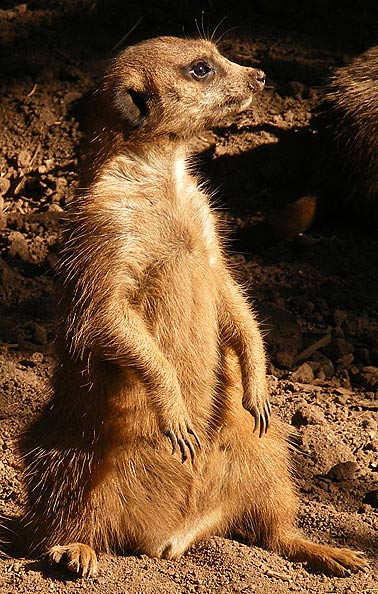
Houtbay World of Birds Wildlife Sanctuary, in Cape Town, South Africa – Photo Credit: Marc Erickson
The meerkat gets its name from the Dutch word for “marsh” or “lake”. In Afrikaans, the meaning is “marsh cat”.
The meerkat is a small mongoose that is active during the daytime. It lives in Botswana and South Africa, in the Kalahari Desert. They are long and slender, measuring between 25 and 35 cm (9.8 to 14 inches) in length, when fully grown. They have long, thin tails, which have either a red or black tip. The long tails add an additional 17 to 25 cm (6.7 to 9.8 inches) to the length of the body and help them balance when they stand upright.
They have four toes or digits on each foot, and each digit has a 2 cm ( 0.78 of an inch ) long claw. These sharp claws are used for foraging, tree climbing and fighting.
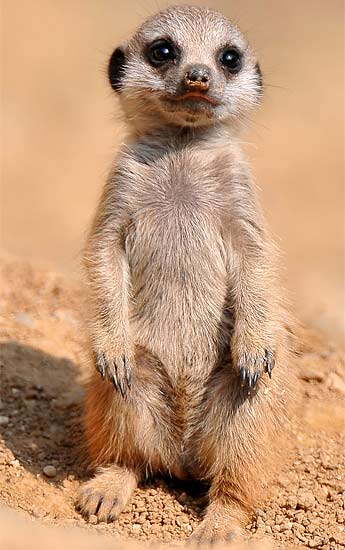
Standing upright is crucial for meerkats on sentry duty. They warn the group of potential threats from larger carnivores and snakes. This gives the young pups the chance to hide in their burrows, while the older ones fend off any attacks.
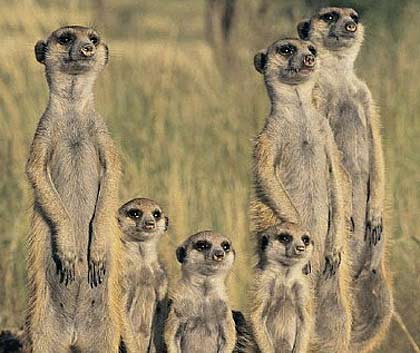
Cute but Violent
It may appear cute and sweet, but it is carnivorous, eating small mammals, snakes, scorpions, spiders and lizards. Their diet mainly consists of insects, some plants, and very rarely, small birds. They are immune to the venom of certain scorpions, and young ones are taught how to hunt and neutralize scorpions, by removing the sting on the tail.
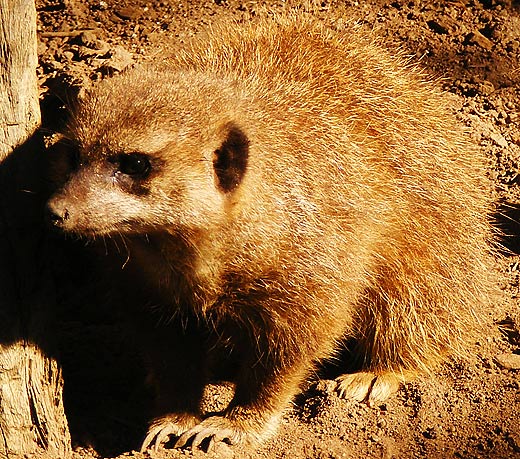
Houtbay World of Birds Wildlife Sanctuary, in Cape Town, South Africa – Photo Credit: Marc Erickson
They are known for their ability to fight and kill Cape Cobras, as well as other poisonous large snakes that try to prey on them. They live in groups of around 20 individuals. These groups are dominated by an alpha pair, and have predictable, complex social structures and rules. Violent death is common during fights for dominance, and when the alpha pair kill off the young of other females in the group.
Groups die off, or are disbanded if the alpha pair are killed.
Useful Coloring
The body is a dusty silver-gray color and has parallel horizontal black stripes on its back. The nose is brown, and it has characteristic black-ringed eyes. The dark tip on the tail is used by adults to allow the young to follow them when they are camouflaged in long grass.
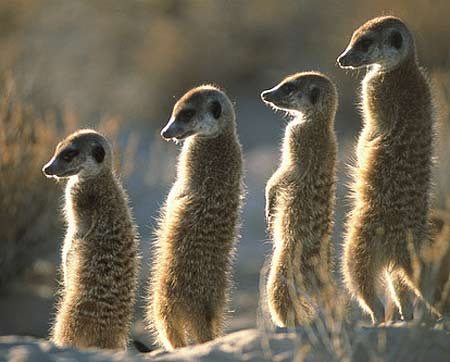
Their bellies have black skin, and this allows them to absorb heat, by standing upright, facing the sun. This is useful for early mornings and evenings, due to the extreme temperature fluctuations of the Kalahari Desert.
